Cogitating
By JC | April 19, 2015
One of the things I’ve always wanted Stitch-Maps.com to be able to do is highlight the spaces between stitch columns.
Or, to put it another way, to break a stitch pattern into its constituent parts.
Having Stitch-Maps.com create these visualizations automagically would be awesome fun, not to mention super useful.
-
You could see where to place stitch markers that would never get caught in decreases, cable crosses, clusters, or gathers.
-
You could find the stitch pattern’s “true” repeat – especially handy when converting flat instructions for use in the round.
-
You could create new stitch patterns, by duplicating, removing, or replacing parts of an existing stitch pattern.
But as much as I want this to happen, I’m not exactly sure how it should work. It kind of depends on the stitch pattern in question, and what you’re trying to do with it.
Take Fleurette, for example. Highlighting all the between-stitch-column spaces gives a jumbled mess.
Sure, these lines show where you could put stitch markers. But it’d probably be more useful to highlight the pattern repeat.
Or is this the repeat?
(Actually, Fleurette’s repeat could be defined four different ways. All are equally valid.)
Another example: Trellis Lace. There’s only one spot you could put a marker that would never get caught in a decrease.
But you’d probably want to know that you could put markers in these spots. They’d gradually move to the left, such that every 12 rows you’d have to add a marker at the right edge, and remove one from the left edge.
More to the point: if you wanted to work Trellis Lace in the round, this would be the easiest way of doing it. Yes, the patterning would spiral, but note the repeat is only 6 rounds, not 12.
So what options should Stitch-Maps.com offer? What sort of visualizations should it make possible? I’m going to keep cogitating on the matter. Of course, if you have any comments to share, I’d love to hear them!



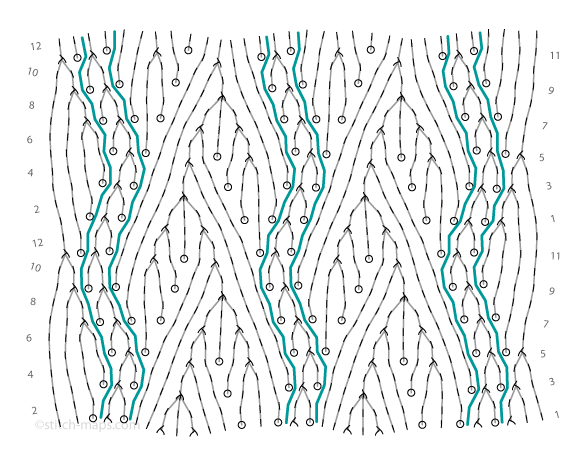
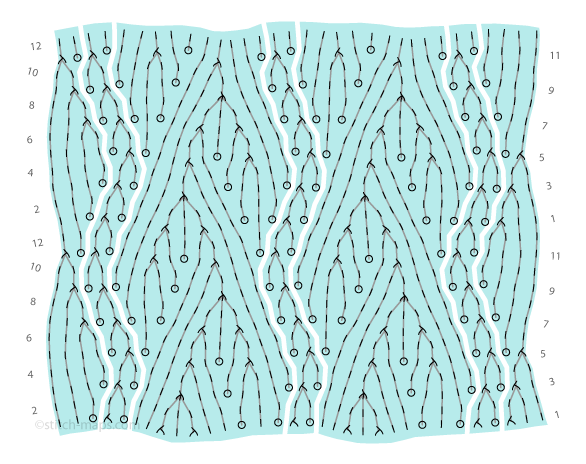
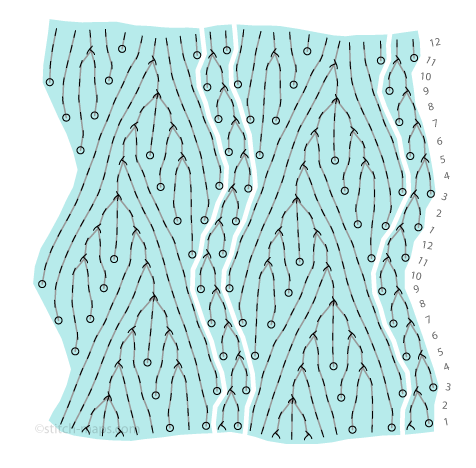
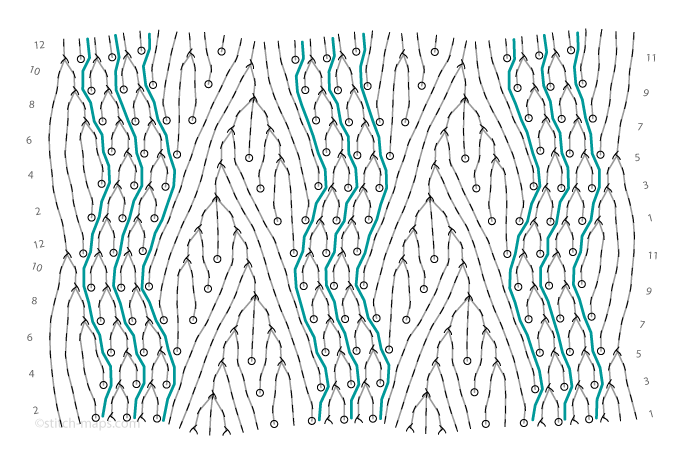
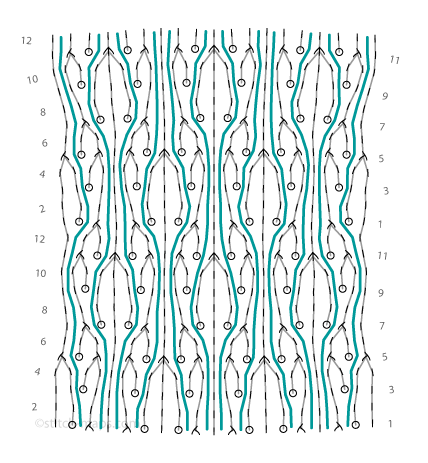
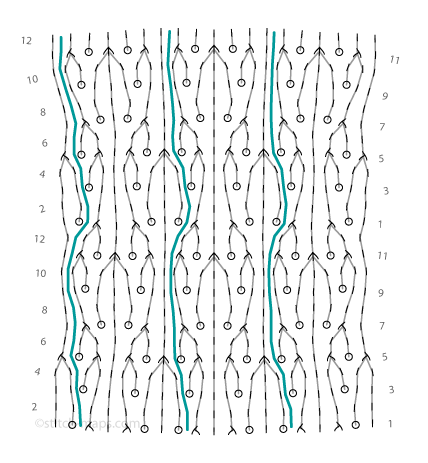
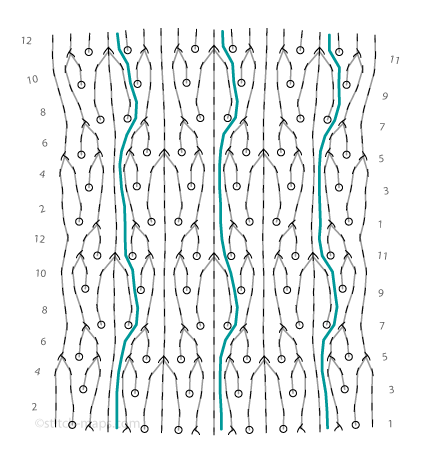
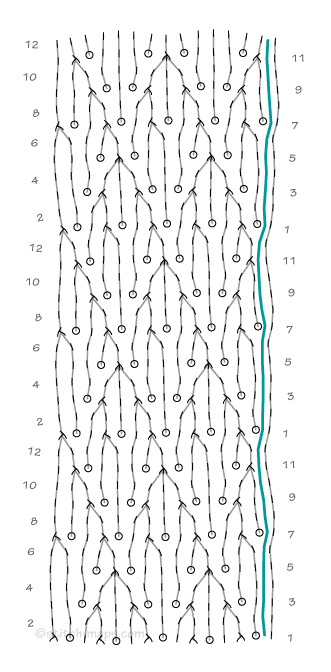

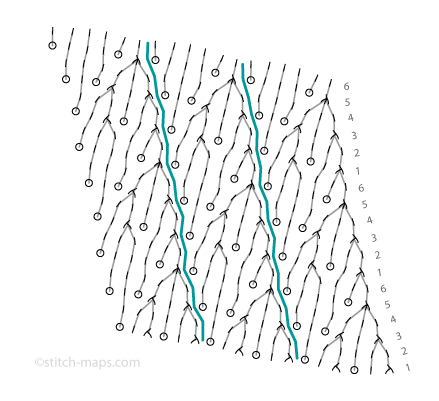
3 Comments